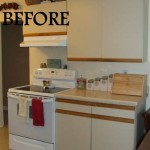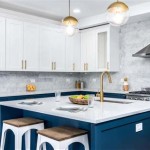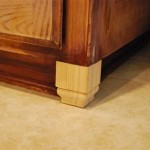Illuminating Your Culinary Space: A Comprehensive Guide to Wiring Lights Under Kitchen Cabinets
Under-cabinet lighting is a popular and practical addition to any kitchen, offering both aesthetic enhancement and functional improvement. Strategic placement of these lights illuminates countertops, providing enhanced visibility for food preparation and other tasks. Furthermore, under-cabinet lighting can contribute to a softer, more inviting ambiance, creating a pleasant atmosphere for cooking and socializing. This article provides a comprehensive guide to wiring lights under kitchen cabinets, covering essential considerations, installation techniques, and best practices for achieving optimal results.
Before embarking on the project, meticulous planning is crucial. Assess the layout of your kitchen, identify areas that require enhanced illumination, and determine the type of lighting fixtures that best suit your needs and aesthetic preferences. Common choices include LED strip lights, puck lights, and linear fixtures. Consider the color temperature of the light as well, aiming for a balance between warm and cool tones to complement your existing kitchen décor. Warm light creates a cozy atmosphere, while cool light is more suitable for task-oriented areas.
Safety is paramount when working with electrical wiring. Always disconnect the power supply to the circuit you will be working on by switching off the corresponding circuit breaker in your electrical panel. Use a voltage tester to confirm that the power is indeed off before proceeding with any wiring work. If you are uncomfortable working with electricity, it is strongly recommended to hire a qualified electrician to perform the installation.
Selecting the Right Lighting Fixtures
The first and perhaps most important step involves choosing the appropriate lighting fixtures. Several options are available, each with its own advantages and disadvantages. LED strip lights are a popular choice due to their flexibility, energy efficiency, and ease of installation. They are available in various lengths and colors, allowing for customization to fit your specific needs. Puck lights are small, circular fixtures that can be individually mounted under cabinets, providing focused illumination. Linear fixtures offer a more integrated look and are often used to provide continuous light across a wider area. When selecting fixtures, consider the brightness (lumens), color temperature (Kelvin), and energy consumption (watts) of each option.
LED strip lights are generally the most versatile and cost-effective option. They can be easily cut to length and connected to a power supply using simple connectors. Puck lights are ideal for highlighting specific areas or objects, such as countertops or backsplashes. Linear fixtures provide a more uniform distribution of light and are often preferred for larger kitchens. The selection should also align with the architectural style of the kitchen. Streamlined, modern kitchens often benefit from sleek LED strips, while kitchens with a more traditional design may be better suited to puck lights or linear fixtures with a warmer light tone.
Another important factor in fixture selection is the method of control. Some under-cabinet lights are controlled by a simple on/off switch, while others offer dimming capabilities. Some advanced systems even integrate with smart home technology, allowing for control via smartphone or voice commands. The choice of control method depends on your personal preferences and the level of customization you desire.
Planning the Wiring Layout and Power Source
Effective planning of the wiring layout is essential for a successful installation. Determine the location of the power source, which could be an existing outlet or a new circuit installed specifically for the under-cabinet lighting. If using an existing outlet, ensure that it is not already overloaded with other appliances or devices. If installing a new circuit, consult with a qualified electrician to ensure that it meets all applicable electrical codes and regulations.
Once the power source is identified, plan the route of the wiring from the power source to the lighting fixtures. Consider using a low-voltage wiring system, which requires a transformer to convert the standard household voltage (120V) to a lower voltage (typically 12V or 24V). Low-voltage systems are safer and more energy-efficient than high-voltage systems. Furthermore, low-voltage wiring is easier to conceal and install, as it can be run through smaller spaces.
Carefully measure the distance between each lighting fixture and the power source to determine the required length of wiring. Add extra length to account for any bends or turns in the wiring route. Use cable staples or clips to secure the wiring to the underside of the cabinets, ensuring that it is neatly organized and out of sight. Avoid running the wiring across areas where it could be easily damaged or snagged.
Concealing the wiring is crucial for achieving a clean and professional look. Consider using wire channels or conduit to protect the wiring and keep it hidden from view. Wire channels are shallow, adhesive-backed strips that can be easily attached to the underside of the cabinets. Conduit is a rigid tubing that provides a more robust protection for the wiring. Choose a wire channel or conduit that matches the color of your cabinets to minimize its visibility.
Installation Techniques and Safety Considerations
With the planning completed, the installation process can begin. Start by disconnecting the power to the circuit at the breaker box. Verify the power is off with a non-contact voltage tester. Mount the lighting fixtures to the underside of the cabinets using screws or adhesive strips, ensuring that they are securely attached. Connect the wiring to the fixtures according to the manufacturer's instructions. If using LED strip lights, cut the strips to the desired length and connect them to the power supply using appropriate connectors. These connectors typically snap on and require no soldering.
If using a low-voltage system, connect the transformer to the power source and then connect the lighting fixtures to the transformer. Ensure that the polarity of the wiring is correct, matching the positive and negative terminals. Use wire nuts or other approved connectors to make the electrical connections. Wrap the connections with electrical tape to provide insulation and prevent short circuits.
Before restoring power to the circuit, double-check all wiring connections to ensure that they are secure and properly insulated. Use a multimeter to verify that there are no short circuits or ground faults. Once you are confident that the wiring is correct, turn the circuit breaker back on and test the lighting fixtures. If any of the fixtures do not work, turn off the power and re-examine the wiring connections.
When working with electrical wiring, it is essential to follow all applicable electrical codes and regulations. These codes are designed to ensure the safety of electrical installations and prevent fires or other hazards. Consult with a qualified electrician if you have any questions or concerns about the electrical codes in your area.
Proper grounding is another critical safety consideration. All metal components of the lighting system should be properly grounded to prevent electric shock. Connect the ground wire to a grounding screw on the electrical box or to a designated grounding point on the cabinet frame. Ensure that the ground wire is securely attached and that there is good electrical contact.
The installation may also involve minor carpentry. For example, drilling small holes to route wires through cabinet walls might be necessary to maintain a clean aesthetic. Always use appropriate safety glasses and a dust mask during drilling. Consider using painter's tape to mark the locations of the holes and to prevent splintering of the wood.
After the installation is complete, conduct a thorough inspection of the entire system. Check for any loose wires, exposed connections, or damaged components. Ensure that all wiring is properly secured and concealed. Clean up any debris or dust created during the installation process. Finally, test the lighting fixtures again to ensure that they are working properly and that the light is evenly distributed.
In summary, wiring lights under kitchen cabinets is a project that demands careful planning, precision, and a strong emphasis on safety. By selecting the appropriate fixtures, planning the wiring layout efficiently, and adhering to all safety guidelines, homeowners can significantly enhance the functionality and aesthetics of their kitchens.

Installing Under Cabinet Lighting

Led Cabinet Lighting Wiring Diagrams

Undercabinet Lighting Rough Wiring

Basic Wiring Example Under Cabinet Lighting Diagram

Installing Your Own Under Cabinet Lighting Young House Love

How To Install Under Cabinet Lighting In The Kitchen Using Led Light Strips

How To Install Under Cabinet Lighting In The Kitchen Using Led Light Strips

How To Install Wired Under Cabinet Lighting True Value

How To Install Under Cabinet Lighting In Your Kitchen Installing

How To Install Under Cabinet Lighting Tutor
Related Posts








